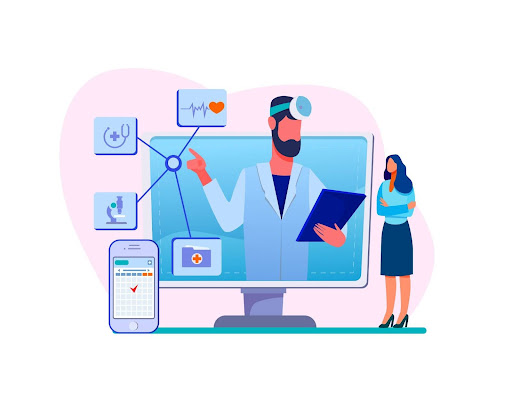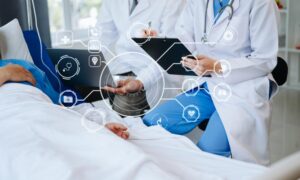Postoperative recovery constitutes a key medical period for patients’ rehabilitation process. Problems such as medical infections and delayed wound healing with insufficient compliance to care instructions will result in more hospital stays along with extended recovery times. Historically health professionals have addressed these difficulties by scheduling numerous personal patient checks. New developments in technology enable Remote Patient Monitoring (RPM) to enhance post-surgical outcomes by delivering powerful benefits.
How RPM Enhances Post-Surgical Care
Remote Patient Monitoring uses wearable devices and mobile apps along with connected health tools to provide real-time monitoring of patients’ recovery metrics. The collection of essential patient data including heart rate and oxygen levels and wound healing information through technological equipment enables care teams to take decisive actions without needing in-person patient classification implementations. RPM technology detects recovery-specific complications which leads to prompt medical care minimising unfavorable recovery outcomes and guaranteeing improved patient outcomes.
Preventing Post-Operative Complications with RPM
Through post-surgical recovery use of RPM medical teams discover complications immediately making intervention possible sooner. RPM technology uses temperature sensors that detect infection indicators before patients know they have symptoms. Patient monitoring tools track significant changes in blood pressure alongside oxygen saturation measures while performing cardiac or pulmonary surgeries. The predictive monitoring ability decreases medical center workloads and gives patients reassurance because it enables nurses to continuously track their condition.
Patient Engagement and Adherence Through RPM
Following post-operative instructions represents an essential factor that determines recovery outcomes. Weakening adherence among patients becomes a common issue when they must follow their medication treatments along with prescribed physical therapy and restrictive diets. RPM tools utilize three essential features to keep patients on track: reminders and educational resources together with feedback systems. Through gamified recovery goals combined with direct doctor availability RPM systems engage patients more effectively leading to both faster and more efficient medical recoveries.
The Psychological Benefits of Remote Monitoring
The psychological components of patient recovery receive little attention through traditional treatment approaches. Patients tend to see slower recovery results when they experience anxiety after surgery because these emotions usually lead to complications. Remote Patient Monitoring serves as a protective system because patients understand their recovery process and receive continuous monitoring throughout their journey.
Reducing Readmission Rates with RPM
Readmissions to hospitals present both financial burdens along substantial emotional hardship for recovery patients. Data demonstrates RPM programs in postoperative care result in better readmission prevention through early detection of complications combined with optimal intervention. The implementation of RPM by healthcare systems leads to operational cost reductions and more effective use of resources. Through RPM patients experience a more streamlined recovery process.
Challenges in Implementing RPM for Post-Surgical Care
The adoption of RPM for post-surgical patient management produces outstanding results yet implementation faces specific obstacles. The main challenge in postoperative care emerges from making technology usable by older patients. Healthcare providers must resolve data security issues while creating systems that both maintain information security and enable accessible data use.
The Future of RPM in Post-Surgical Care
Modern technological progress opens massive possibilities for RPM applications in post-surgical care. Artificial intelligence alongside machine learning technologies enables predictive capabilities of monitoring devices to become more individualized thereby creating enhanced personalized patient care. The combination of virtual reality devices for physical therapy and augmented reality techniques providing wound care demonstrates the future potential of RPM to become a vital post-surgical care system.
Conclusion
Remote Patient Monitoring is revolutionizing post-surgical recovery by offering real-time insights, enhancing patient engagement, and reducing complications. While challenges remain in its adoption, the growing advancements in technology and healthcare systems’ willingness to adapt signal a promising future. By embracing RPM, both patients and providers can look forward to safer, more efficient, and less stressful recoveries.

































